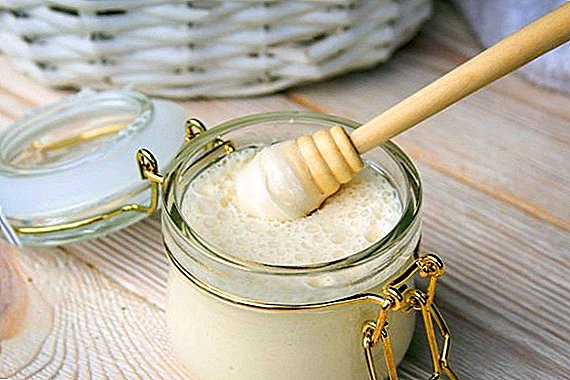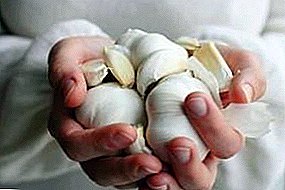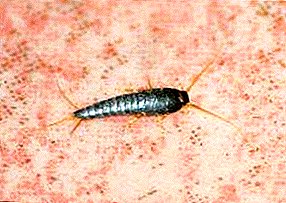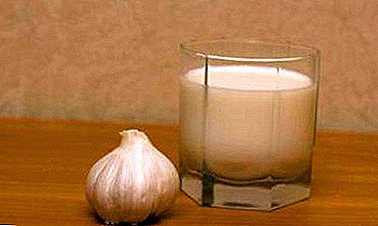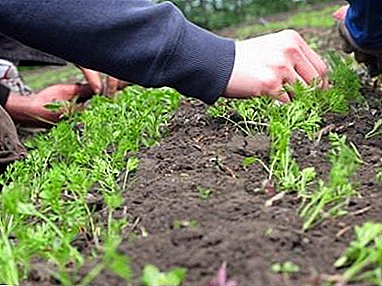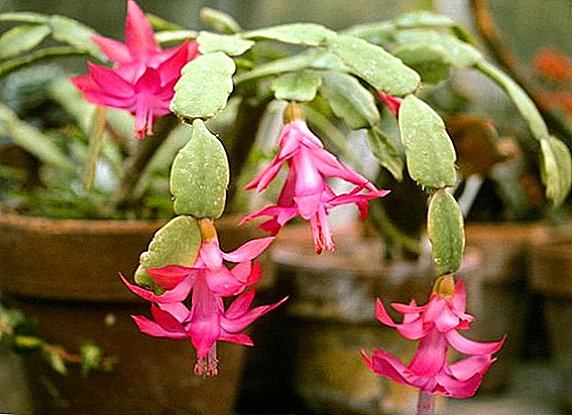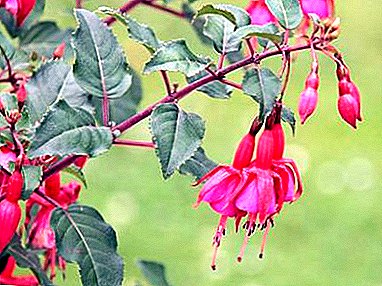
Fuchsia belongs to the genus of Cyprus Perennial plants. It is an unpretentious flower that grows both at home and in the garden.
This plant is remembered for its spectacular flowering is not like any other flower. Another name for fuchsia is "Japanese lantern" as it is called flower growers because of the unusual shape of buds. Read more about growing and caring for the beautiful and unpretentious fuchsia in our article.
Features of this race
This plant may have the appearance of a shrub, tree, flower with direct-flow and wilting stems. Depending on this, the plant can be grown at home in a pot or in the garden. Fuchsia can be seen ampel form or in a pot (about the features of growing and caring for fuchsia at home, read here).
When planting fuchsia should:
- carefully choose a place protected from sunlight;
- do not allow his hypothermia;
- monitor soil moisture.
 The frequency of watering garden fuchsia completely depends on the humidity of the air and weather conditions. The plant must be watered at least once a week.
The frequency of watering garden fuchsia completely depends on the humidity of the air and weather conditions. The plant must be watered at least once a week.
The best temperature for fuchsia is 20-24 degrees in summer. In winter, 5-10 degrees. Fuchsia does not tolerate cold in the winter period of time it needs to be transplanted from a flower bed to a pot and put into a room. If this is not done, the plant will not survive the wintering (for details on how to properly prepare fuchsia for wintering and how to keep it in the basement and in the cellar, read here).
Another feature of the cultivation of this flower in the garden is a poor neighborhood with other plants. If you plant fuchsia closer than 40 centimeters from another plant, then most likely one of them will die. The only exception will be trees and bushes, next to them you can plant fuchsia.
Landing instructions
The easiest way to grow is to plant a fuchsia in a pot or hanging basket, which will weigh on the veranda. This type of planting is not so problematic, because in case of frost, the flower can simply be brought into the house and once again not replanted. For experienced gardeners it is not difficult to plant a plant in a flower bed, but in this case you need to think carefully about the place to plant.
Fertilizer
It doesn’t matter where the garden will have a flower in a basket or flowerbed, the composition of the soil and fertilizers is of great importance. Before planting, you must make a sufficient amount of humus and phosphate fertilizers.
At the time of flowering, too, should not forget about the fertilizer, as the flowers quickly wilt. Every plant from the time of planting should be fertilized.
For fuchsia, the type of fertilizer can be divided into growth phases:
- Young plants need complex fertilizer, which contains a large amount of nitrogen. This component of fertilizer helps to accelerate the growth of the plant and its landscaping.
 Fertilizer with a high content of potassium and phosphorus, which will help the plant to lay a large number of buds for flowering, is best suited for the grown flower.
Fertilizer with a high content of potassium and phosphorus, which will help the plant to lay a large number of buds for flowering, is best suited for the grown flower.
A good option for fertilizer would be if you alternate between mineral and organic. It should be remembered that high-quality fertilizers increase the decorative properties of the plant.
Do not fertilize the plant for 2-3 weeks after transplanting (how to properly transplant fuchsia and get plenty of flowering, you can find here).
Breeding
This plant has several breeding methods, including:
- Seed propagation: In order to get seed fuchsia gardeners resort to artificial pollination. Gardeners like this kind of breeding, because by mixing several different varieties of plants you can get a completely new, not like the others. Collect the seeds to be in dry and warm weather, and after collecting the material must be dried.
- With the help of cuttings: reproduction in this way must be done in March. For this fit the cuttings with a length of 5 centimeters. Usually they are first put in water for rooting, after which, after three weeks, they are sown in a pot of fertilizer and sand.
- With the help of leaves: this method is one of the longest. For this species, choose stems with several leaves and gently tear them from the plant, then, without germinating the roots, place them in loose earth 1 centimeter deep and cover with a lid.
A plastic or glass cover is best. For the successful germination of leaves must be watered daily, sprinkling with boiled water. The plant will be ready for transplant immediately after the roots appear.
Each of the types of germination in its own interesting, but the most familiar is growing with cuttings. This method is most effective for use by experienced gardeners.
Material for germination seed method is obtained exclusively from mature flowers.
Some nuances
 You can grow fuchsia in the garden, but for this you need to spend time and be prepared for the fact that the plant does not take root. The following rules should be remembered for the plant to stick to the flowerbed:
You can grow fuchsia in the garden, but for this you need to spend time and be prepared for the fact that the plant does not take root. The following rules should be remembered for the plant to stick to the flowerbed:
- For planting is used a plant that has, for some time growing in a pot. Do not use freshly germinated flowers, they can not settle down in the new soil.
- Place for planting should be chosen carefully, without direct sunlight and drafts.
- Near the selected place should not grow other flowers, then one of the plants may die.
- Planting fuchsia is necessary only in the pre-fertilized soil and remember to feed during the release of flowers.
Using such simple rules when planting a plant you can achieve a good result. Then the plant will grow and produce many new buds, while pleasing the gardener.
Aftercare
In addition to timely feeding plants should comply with the requirements of care:
- in especially dry time, you need to monitor the soil moisture and water the flower at least twice a week;
- monitor the condition of the plant so that it does not get sick;
- with the onset of cold weather you need to take care of transplanting plants in a pot.
If you follow the instructions for fertilizer and care for the flower, then he will definitely please his flowering in the near future. With good care, you can think about crossing species with seed breeding. Thus, it can turn out very beautiful flowerbed planted with fuchsia.
Possible diseases
 Garden fuchsia very often attracts pests, so you should be very careful about changes in foliage and shoots. The most frequent diseases in this plant are:
Garden fuchsia very often attracts pests, so you should be very careful about changes in foliage and shoots. The most frequent diseases in this plant are:
- The appearance of brown spots or rust indicates a disease of the flower. Seeing such leaves you need to remove them immediately so that the disease does not go on healthy leaves. After this, the flower can be processed using a Topaz-type preparation.
- Yellow leaves indicate Chlorosis. This is a disease that occurs as a result of a lack of magnesium and nitrogen. It can be cured with fertilizer and reduced watering.
- Leaf fallout can occur due to the whitefly, which feeds on the flower sap, after which the leaves turn yellow. It is possible to get rid of such pests by washing the plant with soap and using special preparations of the Aktara type.
- The spider mite pretends to be yellow-white bloom with dots on the back of the sheet. Treat plants for ticks using Fufanon.
This is impossible to predict, and it remains only to observe the state of the flower in order to prevent its death.
Fuchsia is a very beautiful flower that is suitable for a garden, both a novice and an experienced gardener. Growing it is quite simple relying on recommendations and instructions. Of course, flower in the pot requires less care and worries than the one that landed on a flower bed (about the secrets of growing fuchsia and caring for it at home and in the garden, we told here). But this should not become an obstacle for planting this plant, because of unusual beauty, flowering will decorate any garden.


 Fertilizer with a high content of potassium and phosphorus, which will help the plant to lay a large number of buds for flowering, is best suited for the grown flower.
Fertilizer with a high content of potassium and phosphorus, which will help the plant to lay a large number of buds for flowering, is best suited for the grown flower.